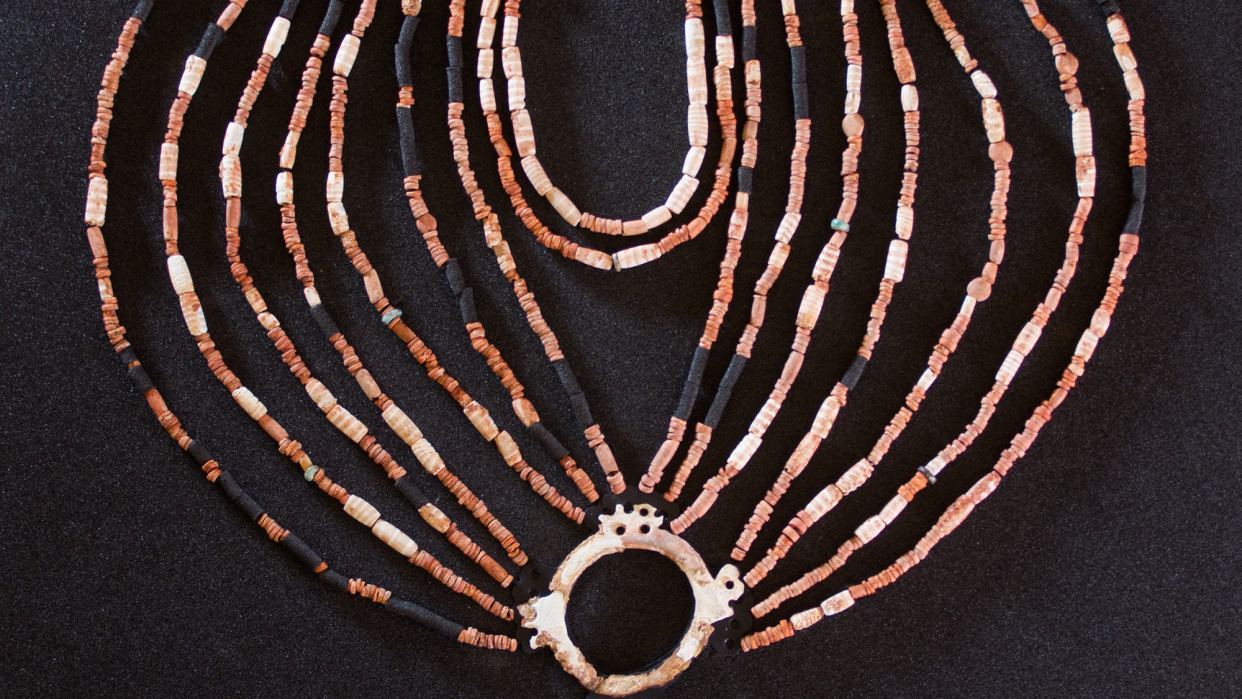Ancient child's grave holds intricate necklace with more than 2,000 stones

Humans have had a love for shiny accessories and adornments for thousands of years. Now, a newly discovered ornate necklace discovered in a child’s grave in ancient Jordan is giving archaeologists insights into the complex social structure of Neolithic cultures. The necklace is described in a study published August 2 in the open-access journal PLOS ONE.
[Related: Scientists build intricate Neolithic family tree from 7,000-year-old DNA.]
The Neolithic Age began in roughly 10,000 BCE and is considered the later part of the Stone Age. This period was known for polished stone tools, more permanent settlements and villages instead of hunter-gathering societies, domesticated plants and animals, and some pretty strong women. Body adornments were (and still are) powerful symbols that visually communicate cultural values and personal identities. Scientists studying ancient cultures can learn a lot from the valuable objects people were buried with, from the amulets left with a teenage mummy in ancient Egypt to the ivory tusks buried with a very important Copper Age woman.
In this study, a team analyzed the materials that were found adorning the body of an eight-year-old child who was buried in a grave at the 9,000 year-old Neolithic village of Ba’ja in Jordan. Estimates say he likely died somewhere between 7400 and 6800 BCE. They found more than 2,500 colorful stones and shells, two large amber beads that are currently the oldest known in the Levant, a large stone pendant, and a delicately engraved mother-of-pearl ring buried with the unidentified child.
After analyzing the craftsmanship, composition, and the spatial layout of these items, the team believes that they likely belonged to a single composite multi-row necklace that has fallen apart over time. They created a physical reconstruction of the necklace as part of the study and it is currently on display in the Petra Museum in Wadi Musa, Jordan.

According to the team, this multi-row necklace is one of the oldest and most impressive Neolithic ornaments found to date. It appears to have taken meticulous work and required the importation of materials from other regions outside of Jordan. It offers new insights into funerary practices at the time, since burial techniques are often an indicator of relationships in a community and shared values of a culture.
[Related: This teen mummy was buried with dozens of gold amulets.]
This necklace also shows a complex social dynamics between the Ba’ja community members at the time who would have had to come together to make this necklace, including artisans, traders, and the high-status authorities who would commission such pieces. Future studies could look into this aspect of Neolithic culture and recent advances in spectroscopy techniques could potentially reveal where the various beads and gemstones came from.
